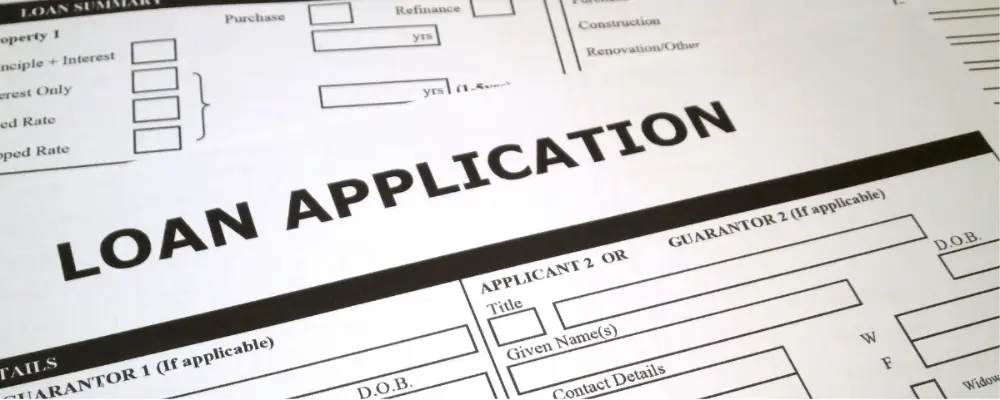You are full of enthusiasm the moment you decide to build your house. Many ideas might inspire you to gather funds for building your dream home. However, if you feel uncertain or lack sufficient funds, borrowing money from a lender might be the solution. This is where banks step in to play the role of providing you with the financial support needed to build your house. When approaching banks to apply for a loan, several essential steps are involved in the process of securing financing for your homeownership.
Step by step – Home Loan Procedure
Banks may have minor procedural differences, but the general process is consistent. Following these guidelines will make your home loan application straightforward and worry-free.
Step 1: Filling the form
The first step in the home loan procedure is filling out an application. Some basic information about the applicant has to be filled in this form. Typically, this consists of:
- The applicant’s personal information (name, phone number, etc.)
- The applicant’s residence address
- The applicant’s monthly or annual income
- The applicant’s educational background
- The applicant’s employment information
- The specifics of the property for which the loan is applied.
- The property’s estimated cost.
- The current method of funding the house.
The next step after completing the formal application is to include all of the required documentation that the bank requests. Typically, this comprises the:
- Income proof
- Identity (or ID) proof
- Age proof
- Address proof
- Employment details
- Educational proof (degree certificates, diplomas, or schools)
- Bank statements
- Details of the property used to apply for the loan (if approved)
Step 2: Documentation
The applicant must pay the bank the processing charge after completing the formal application and document submission process. This amount is collected to keep the applicant’s loan account open. It entails submitting certain private documents annually, such as IT certifications, postdated checks, etc.
A bank’s processing charge often consists of:
Even though the majority of banks have a set charge schedule, it is negotiable. Attempting to negotiate the processing charge is not illegal. For a loan amount of Rs. 15 lakh, the processing fee would be Rs. 3,750 (0.25%) or Rs. 7,500 (0.50%) if the applicant had applied for one.
The bank then generates a commission for the agent managing the applicant’s home loan procedure, which is partially deducted from the applicant’s processing fee.
Step 3: Processing and Verification
The applicant must wait for the bank or relevant financial organisation to review the documents after completing the application and supporting documentation. If the documentation is submitted correctly, it normally takes one to two days or even less.
Before accepting a loan, the bank may request that the applicant attend a meeting. This allows the bank to acquire more information and confirm that the applicant can repay the loan with interest.
Step 4: Sanction Letter
A sanction letter is a key step in securing a home loan. This phase can yield either a favourable or unfavourable result. The bank determines everything.
Your chances of being approved diminish if the bank is unhappy with any of your paperwork. However, if everything goes according to plan, you will shortly receive notification of your loan approval or sanction.
When approving a home loan, a bank usually reviews the following documents submitted by the applicant:
- Details about experience, age, and qualifications.
- The transactions with the applicant’s financial institution.
- The annual and monthly earnings.
- The kind of work that he or she pursues and the current employer.
- The type of business (this only applies to independent contractors).
- The ability to repay the loan amount at the predetermined interest rate.
The bank reviews the provided information and informs the applicant about the maximum loan amount they can receive. The final step is issuing a formal sanction letter, which may be unconditional or come with specific conditions the applicant needs to fulfil before the loan is disbursed.
Step 5: Secure Payment Fee
A one-time safe payment charge will be required when you sign the sanction letter. The bank may ask you to pay the fee in full before or after the loan is granted.
Step 6: Legal and Technical Check
The bank then focuses on the house that the applicant plans to buy after the offer letter is formally accepted by the applicant. The applicant may request a period to choose one, even if it is not finalised.
After choosing the property, the candidate must:
Deliver all original property records to the bank. They retain them until the debt is paid back. Additionally, these documents act as collateral for the house loan that the applicant has requested.
In the original property document, the following information must be included:
- The seller’s name.
- The seller’s evidence of identity and address.
- The property’s name.
- The property’s address.
- Relevant written records if the seller is not the principal or actual owner.
- A No Objection Certificate (NOC) from the primary legal owner (if applicable).
- An approval letter from the housing society and board representatives.
- The bank will also need a NOC from the lessor if the land is already leased.
The bank conducts a legal check of the property documents when they are filed. This process verifies both the authenticity of the documents and the validity of the sale agreement between the seller and the applicant.
The bank’s legal team reviews these original documents thoroughly. Once they certify that all the documents are in order, everything related to the home loan will be cleared. If necessary, additional documents may be requested for verification.
Step 7: Loan Disbursal
The loan amount is disbursed by check once the applicant signs the documents and all the legal requirements are met. However, as these would be his or her personal contribution to the home property, the applicant must first provide the bank with a few necessary documents.
If the applicant is attempting to obtain additional funding from outside sources, supporting documentation must also be provided. The bank will subsequently issue the loan’s partial disbursement. The seller, the contractor, or the development/society authority is always in charge of the bill.
However, there may also be some rare instances. Assume, for example, that the applicant received the cheque straight from the bank after making an extra payment from his or her account.
Take note: Since every day matters in this situation, be careful not to postpone the home loan application procedure once it has been approved. Interest rates are assessed as soon as the loan is approved and continue to do so. So, it charges every day! Therefore, make sure the bill is picked up on the specified delivery date. Don’t pay extra interest.
What are the Things that Affect your Home Loan Approval?

Here’s a quick point to help you comprehend the above elements and raise your chances of getting accepted.
You must be aware of the five crucial elements affecting your eligibility for applying for a home loan:
- Your Credit Score and Credit History:
A statistical representation that helps you secure a home loan is your credit score. Lenders from different banks may review your credit history and score to determine whether to lend you money, at what interest rate, and how much. Having a good credit score above 750 can help you access more benefits.
- Your Consistent Income:
While processing your home loan, the important factor used to review is your consistent income and work history, which help the banks understand your eligibility for repaying the loan.
- Your DTI, or debt-to-income ratio:
Your debt-to-income ratio (DTI) is a key consideration. Before applying, it’s advisable to pay off any outstanding debts to keep your DTI low.
- Down Payment:
Make sure to have at least 20% of the down payment in your hands. It helps to lower the loan amount and increase your eligibility to apply for a home loan.
You must select your loan term based on your affordability and ability to repay.
Tips for a Smooth Application Process
1. Seek out the banks with the best rates for house loans.
2. Thoroughly review the eligibility requirements of banks before applying for a home loan.
3. Identity proof, proof of address, and employment documents are to be prepared while applying for a home loan.
4. Avoid submitting fraudulent documents since this can lead to major issues.
5. Bring the original paperwork when you meet with the bank representative.
6. Even if you are eligible for a higher amount than you expected, you should borrow how much you can afford.
7. Take advantage of the opportunity to negotiate interest rates.
8. Recognise other costs, like site assessments and processing fees.
9. Throughout the procedure, don’t omit any processes related to value or verification.
10. Before signing, carefully review all loan documentation.
11. The bank retains the original property documents until the loan is fully repaid.
12. The loan process typically takes two weeks if the documentation is valid.
Conclusion
A home loan makes your dream of owning a home a reality. If you understand the procedures and factors involved in qualifying for a home loan, you can move forward with confidence. Remember to maintain a good credit score, demonstrate that you have a consistent source of income, pay off your commitments properly, and choose a house that meets the lender’s criteria.

